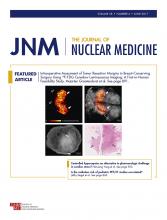Effective therapy of metastatic cancer remains an unmet challenge for science and medicine. Radioligand therapy (RLT) using small drugs with high affinity to target specific cell surface receptors of the cancer cell is highly effective and well tolerated. In this issue of The Journal of Nuclear Medicine, Schulz et al. report on neurotensin receptor 1 (NTR1)–directed RLT in a xenograft model of HT29 colon cancer (1). The affinity and specific uptake of the 177Lu-labeled antagonist 3BP-227 in NTR1-expressing tumors were established previously (2). In this preclinical model, Schulz et al. demonstrate high tumor–to–organ uptake ratios with effective and dose-dependent tumor growth inhibition (1). 177Lu-3BP-227 RLT exhibited a biodistribution and efficacy similar to those previously reported for 177Lu-DOTATATE (3,4) or 177Lu-PSMA (PSMA is prostate-specific membrane antigen) (5), drugs that already underwent successful translation. 177Lu-DOTATATE for RLT of metastatic neuroendocrine tumors proved highly efficacious, with a near 80% risk reduction for disease progression or death in a recently published prospective randomized international multicenter trial (6). 177Lu-PSMA led to high rates of biochemical and image-based responses in patients with metastatic prostate cancer (7). Both these treatments are exceptionally well tolerated, with a few serious, in most cases reversible, hematologic adverse events, and present milestones in the care of patients with metastatic neuroendocrine neoplasms or prostate cancer. Although the future application of NTR1-directed RLT is not yet clearly defined, there is a variety of indications to which it may be applied. NTR1 expression is seen in a range of cancer types, including colon carcinoma; pancreatic ductal adenocarcinoma; breast, prostate, and lung cancer; and head and neck squamous cell carcinoma (8). However, the level of NTR1 expression varies considerably.
For clinical translation, it is now critical to define a key indication based on clinical need, tumor biology, and target expression to subsequently prove efficacy of 177Lu-3BP-227 RLT in clinical trials. Stratification by PET/CT, as implemented for theranostic 68Ga/177Lu ligand pairs, is successfully applied within somatostatin receptor– and PSMA-directed RLT. The quest for a key application should similarly be guided by NTR1-directed PET/CT as gatekeeper for NTR1-directed therapy.
Pancreatic ductal adenocarcinoma (PDAC) was discussed as a potential key application based on high receptor density in about 75% of differentiated tumors (9,10) and immense clinical need. Preliminary experience in a patient with metastatic PDAC indicated safety and effective tumor shrinkage after 177Lu-3BP-227 RLT (11). Therefore, metastatic PDAC might be the leading contender for NTR1-directed RLT, in particular because target expression was demonstrated in distant metastases (9). However, the efficacy of external radiation therapy for PDAC remains controversial (12,13), indicating potential resistance mechanisms. Also NTR1 is absent in about one third of primary or metastatic lesions (9), underlining the need for individual patient stratification by NTR1-directed PET/CT.
To define key indications for 177Lu-3BP-227 RLT, more data need to be acquired for PDAC and other cancer types. Target expression, tumor biology, and clinical need have to be considered to identify the most promising application to ultimately warrant successful clinical translation.
DISCLOSURE
No potential conflict of interest relevant to this article was reported.
Footnotes
Published online Mar. 9, 2017.
- © 2017 by the Society of Nuclear Medicine and Molecular Imaging.
REFERENCES
- Received for publication February 19, 2017.
- Accepted for publication February 21, 2017.







